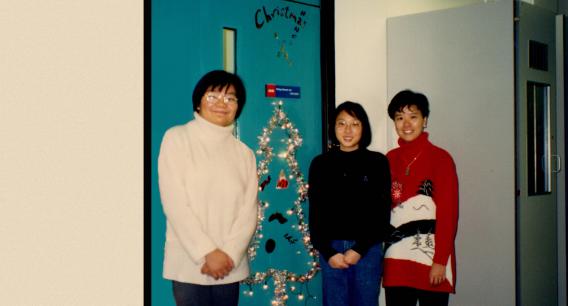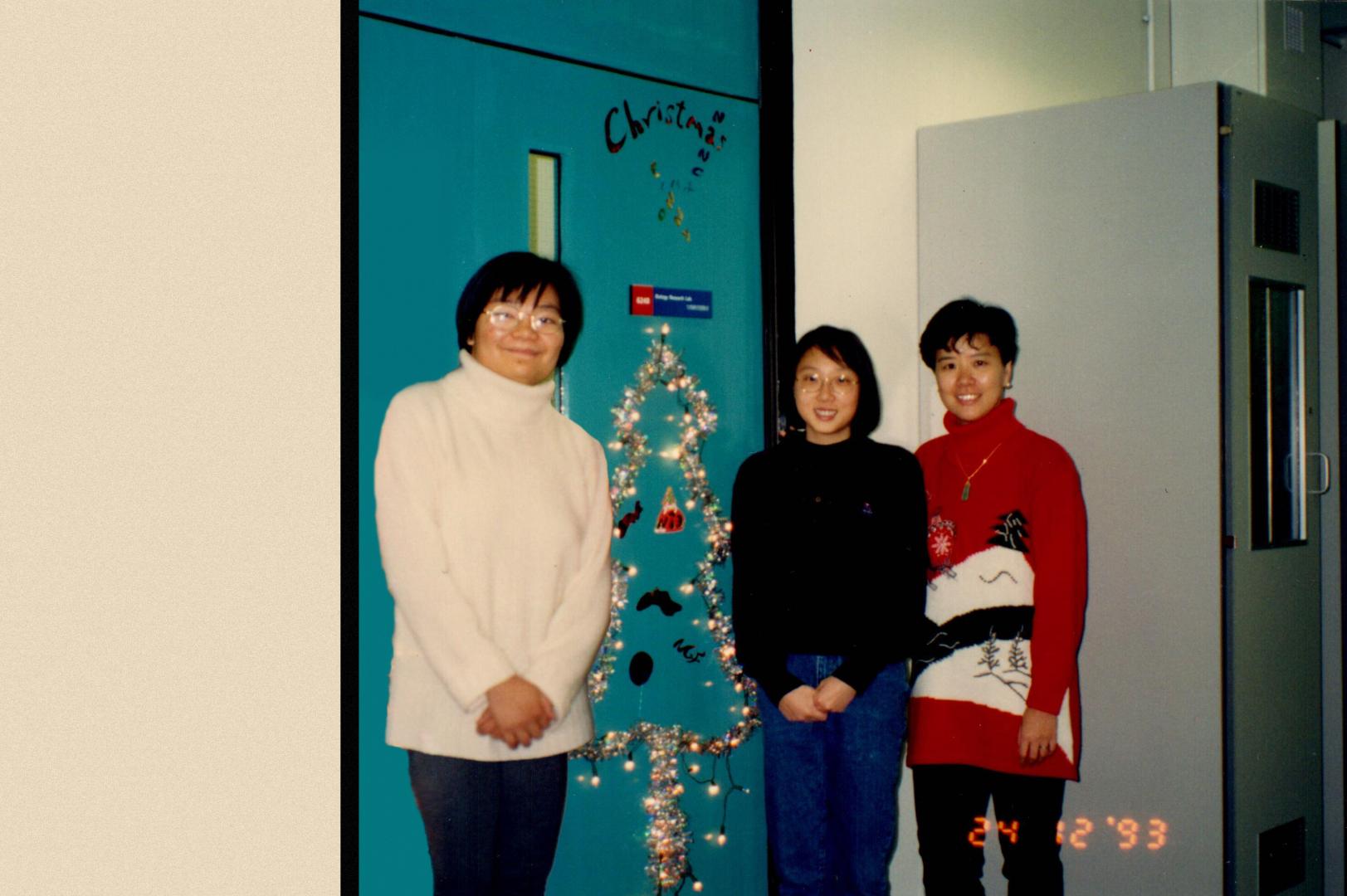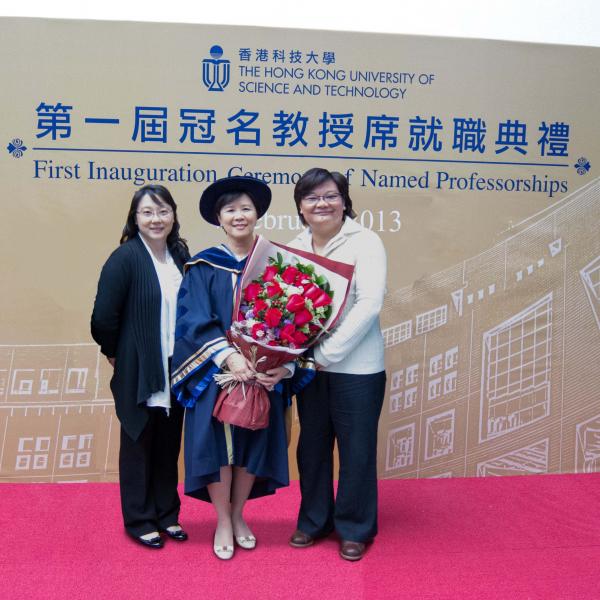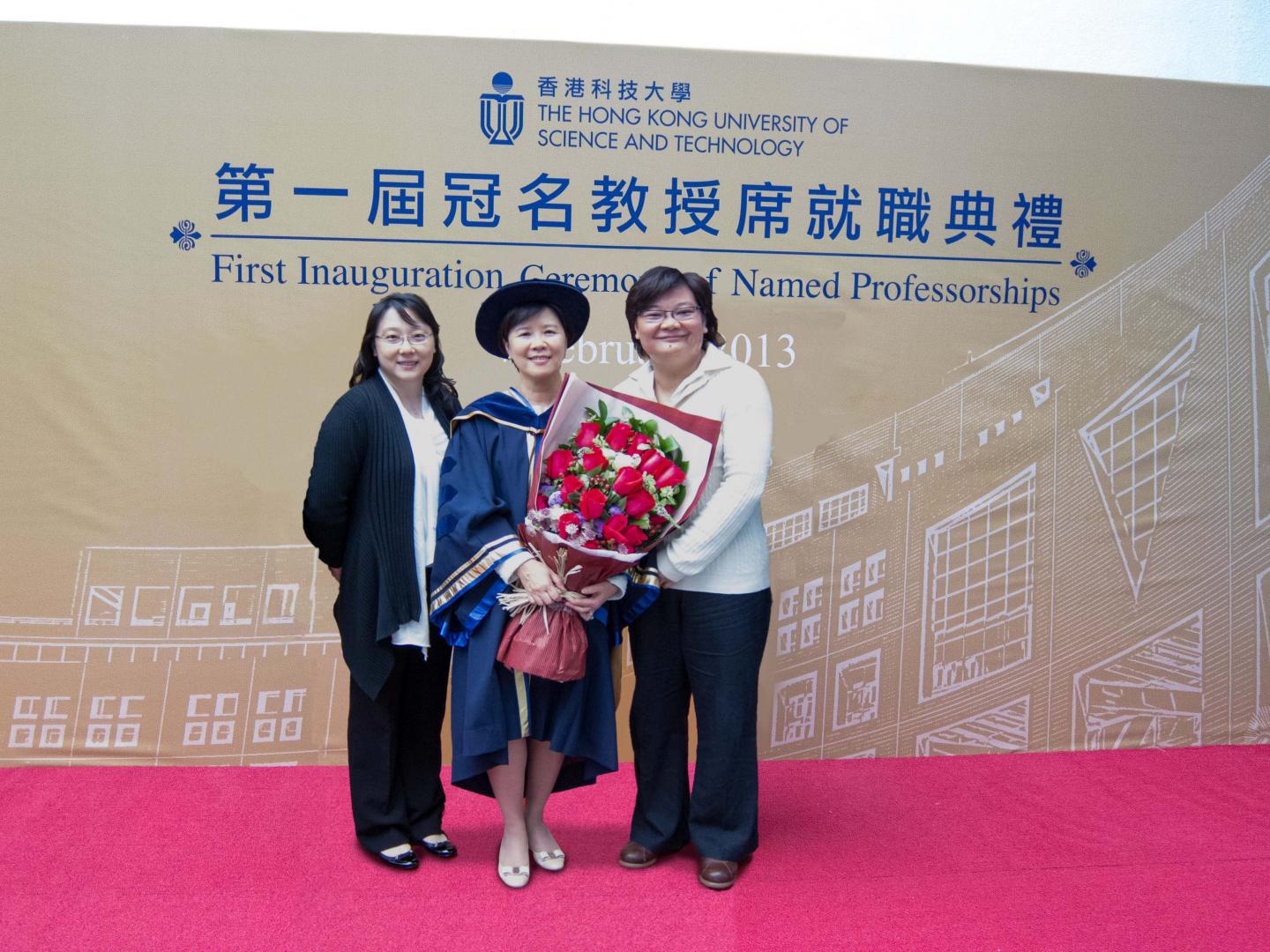Healthy Aging for the Brain
As the saying goes, life without memory is no life at all. What if you develop a disease that is capable of stealing your memory, and even more? Your judgement, thinking, and, at the severe stage, physical ability to speak and move around are all gone.
Alzheimer’s disease (AD), the most common form of dementia — the so-called “21st century plague”, is such a brutal thief. Characterized by an irreversible neurodegenerative process, the disease can tragically ruin an aging brain, making us forget our loved ones and dashing our hopes of healthy aging, before finally claiming our life. Since the notorious disease was first described and identified over a century ago, it has remained very much of an unsolved mystery, from its cause and its complex genetic processes to a known cure.
HKUST’s Prof. Nancy IP and her two protégés, Prof. Amy FU and Dr. Fanny IP, are working around the clock to untangle the mystery. Over the past decade, the trio has raised the hopes of many AD patients and their loved ones with their research breakthroughs conducive to the prevention and diagnosis of the disease, as well as development of disease interventions.
Changing the game
Led by Prof. Nancy Ip, Vice-President for Research and Graduate Studies and Morningside Professor of Life Science, the team has made seminal discoveries in the field, most recent of which is the world’s first demonstration of effective brain-wide genome editing technology that curbs AD pathologies throughout the whole brain with a single jab. “This is an important milestone for the use of genome editing in treating hereditary brain diseases,” says Prof. Ip with delight.
This is also particularly thrilling to patients living with a hereditary form of AD called Familial Alzheimer’s disease, which has a clear genetic cause and contributes to around three to five per cent of all AD cases. “The single-shot genome-editing strategy has lasting effects in our mouse models, which show improvement in memory performance.” In the future, in addition to alleviating AD pathologies, it may even be possible to correct disease-causing genetic mutations before AD symptoms appear in these patients.
Earlier this summer, the team already brought excellent news in AD diagnosis by developing a non-invasive, highly accurate blood test based on Chinese patient data to diagnose a person with AD. “I am so proud of the blood test,” says Prof. Ip. “It is currently the most comprehensive study of blood proteins in AD patients.” Through studying the change in the levels of blood proteins, the team successfully identified 19 representative plasma proteins associated with the disease — the biomarker — with which they can differentiate the various stages of the disease through an algorithm.
Unlike traditional diagnostic tools such as cerebrospinal fluid analysis and brain imaging, which are either invasive or costly, the test requires only one drop of a person’s blood to test for such a complex, multi-factorial disease. “It could change the game for AD diagnosis, and we are confident to see its large-scale application in the next five to ten years.”
Along with paving the way to novel therapeutic treatments, the blood test will allow early detection of the disease and hence early management and closer monitoring to slow the rate of deterioration. “AD pathological changes in the brain take place at least 10–20 years before symptoms appear. We need to know what is happening in the brain, the sooner the better.”
Other research breakthroughs that the team has made over the years include the discovery of a novel molecule target that blocks the abnormal activation of a protein involved in the pathology of AD, and the identification of novel targets for restoring neural homeostasis in AD patients, to name a few. All these have encouraged the team and scientists in general to continue their search for a long-acting treatment for the many incurable neurodegenerative diseases.
The brains behind the fight
Dementia resulted in an estimated US$1.3 trillion societal cost in 2019 worldwide. In addition to the massive societal cost, it also causes great emotional distress and burden to the patients and their families and carers, making it an even more alarming issue on the scientist’s table.
Answering the call of duty as a scientist, Prof. Ip began to ramp up her efforts in fighting AD around a decade ago. The expedition into the unknown is by no means easy, but achievements are made possible with a unified, determined team.
“We don’t stay within our comfort zone and keep dwelling on the fruits our previous research yielded,” says Prof. Amy Fu, Research Associate Professor of the Division of Life Science. She started as a technician at Prof. Ip’s lab in its founding days, but soon changed her pathway to pursue a research career upon Prof. Ip’s support. “She saw in my character that I have what it takes to do research,” recalls Amy Fu.
Also on the team is Dr. Fanny Ip, Prof. Ip’s first PhD student who is now Senior Manager (R&D) of the State Key Laboratory of Molecular Neuroscience. “I came from a clinical biology background, but Prof. Ip encouraged me to try a different field.”
Both Prof. Fu and Dr. Ip have proven their dedication to science by serving as the core members on the team for nearly three decades. Today, they continue to support Prof. Ip’s efforts to identify genetic factors associated with AD and understand how these factors contribute to the disease. Specifically, Prof. Fu devotes herself to AD basic research to identify more biomarkers, diagnostic tools, and therapeutic targets, while Dr. Ip dives deep into the neuroprotective effects of Chinese herbal medicine and strengthens their community engagement to collect more clinical information from patients to support experiments at the laboratory.
Dr. Ip’s intensive research on the potential use of traditional Chinese herbal medicine has been particularly fruitful. Decades of intensive research efforts have led to the development of health supplements comprising active extracts from the herbal ingredients that prevent or attenuate degenerative brain diseases.
“The world's aging population is growing at an unprecedented rate. How do we stay healthy while leading a longer life?” ponders Dr. Ip. From basic research to translational research, and from translational research to clinical research, the team has walked a long way to look for an answer to the question, and while there may not be panaceas, the team remains motivated. “We will keep up with our research to look for ways to slow down degeneration of our brains, while also promoting health awareness in society.”
How it started
Prof. Ip first stepped into the neuroscience research field in late 1970s when she did her PhD study at Harvard Medical School under the tutelage of Prof. Richard ZIGMOND, and has not left this mesmerizing field since. “The brain is really complicated with much of its functions still remains unknown,” says Prof. Ip. “But it’s integral to how the body functions.” As a PhD student, she channeled her curiosity into action and published more than a dozen of academic papers — prolific even by today’s standard.
“I was looking for a new mechanism of brain cell communication for my PhD thesis, which may not have existed in the first place! It was a risky project, but I succeeded. I could have taken the easy path, but to discover the unknown is exactly why we are in science.”
Driven by her passion for science, Prof. Ip made a bold move to go from academia to industry after earning her PhD, building a career at the biotechnology firm Regeneron in New York. Leading a team of some ten scientists to study the regeneration of nerve cells, she, together with her mentor George YANCOPOULOUS and other colleagues, made revolutionary contributions to the field of neurotrophic factors. “For some years I was the only female senior staff scientist of the company, but I never really viewed myself differently. I let my capability earn people’s respect.”
Her four-year stint at the company laid the foundation for its growth into one of the US’ Nasdaq-100 index constituents today. But in between that, the risk-taking factor came into play again. In 1993, Prof. Ip, then already a mother of two, returned to Hong Kong to embrace the exciting opportunities at the newly established HKUST as a junior faculty member.
Starting from scratch
The environment in Hong Kong was very different for Prof. Ip than in the US. With HKUST emerging as the first research university in Hong Kong in the 1990s, the city’s research visibility by then was, in Prof. Ip’s words, “not even on the map.”
Facing a nearly bare laboratory with limited equipment and funding, Prof. Ip admitted that it was very challenging in the early years. “I had many ideas, but the environment made them difficult to be realized.” What kept her going was, again, her passion for science. “Giving up is never an option for scientists. But without perseverance and passion, it is impossible to overcome all hurdles,” Prof. Ip says. Knowing so well that achievements are not garnered overnight, Prof. Ip quickly collected herself and recruited loyal team members — including Prof. Fu and Dr. Ip — with her ardent spirit and amiable personality. Perhaps unintentionally, but in devoting herself to research at HKUST, Prof. Ip played a key role in nurturing a new generation of female scientists of high standard and integrity.
In the following years, the team grew in leaps and bounds in their basic research output ranging from brain cell communication to neuro development. Prof. Ip’s rapport with international scientists was instrumental in giving them the opportunity to collaborate and learn with overseas laboratories. The team also managed to secure important grants from local and overseas funding agencies to sustain their research initiatives.
In 2001, they became the first group of Chinese researchers to publish their research, specifically their work on the potential functions of the protein Cdk5/p35 at the neuromuscular synapse, in the prestigious Nature Neuroscience journal. “It did not happen overnight. We went through tough years to lay the foundation, without which innovation would not have been possible.” says Prof. Ip.
Accelerating the fight
While the team believes that all innovation starts with basic research and does not happen in the blink of an eye, the clock is ticking fast to find a cure for AD. By 2050, it is estimated that the number of AD patients will exceed 40 million in China alone. Many of the critical data integral to the development of a cure or anything close, however, remains beyond scientists’ grasp.
When Prof. Ip first entered the AD field, she spotted a knowledge gap regarding AD patients with Chinese ethnicity. “We saw the need for a Chinese AD patient database because over 90 per cent of the existing research papers are based on data from patients with European descent,” says Prof. Ip. “Research findings have to be validated across ethnic groups. What works for European patients may not work that well on Chinese patients, and vice versa.”
She soon established the team as a new bellwether in this aspect. Thanks to a highly competitive grant from the national 973 program, they were able to collaborate with clinicians in the Mainland to collect patient samples and perform genetic analysis. In four years’ time, they became the first to publish a whole-genome sequencing study in a Chinese AD cohort, which identified the AD genetic risk factors in the Chinese population. The achievement soon led to a partnership between the team and hospitals and community services in Hong Kong to further study the genetic risk factors for AD in the Chinese population, putting the team’s aging research efforts into practice.
Collecting and studying data from Chinese patients underpin the team’s advocacy of patient stratification in clinical trials according to their genetic make-up, a tailored approach regarded by many as the winning bid in searching for a disease-modifying drug. “Stratification would be key to precision medicine or personalized medicine,” affirms Prof. Ip. “By reforming the patient cohort, the patient data will be less heterogenous and I am sure that will make clinical outcome more significant. I believe this is achievable.”
Prof. Ip’s idea is certainly not up in the clouds. With the opening of the Center for Neurodegenerative Diseases, in collaboration with the Stanford University School of Medicine and University College London under the Health@InnoHK research cluster program, the team will be able to accelerate their progress in understanding this devastating disease better. In the long run, the partnership will support the establishment of a collaborative scientific hub for neurodegenerative disease research in Hong Kong.
While healthy aging might be a distant dream for many, scientists at HKUST have definitely not lost hope.




